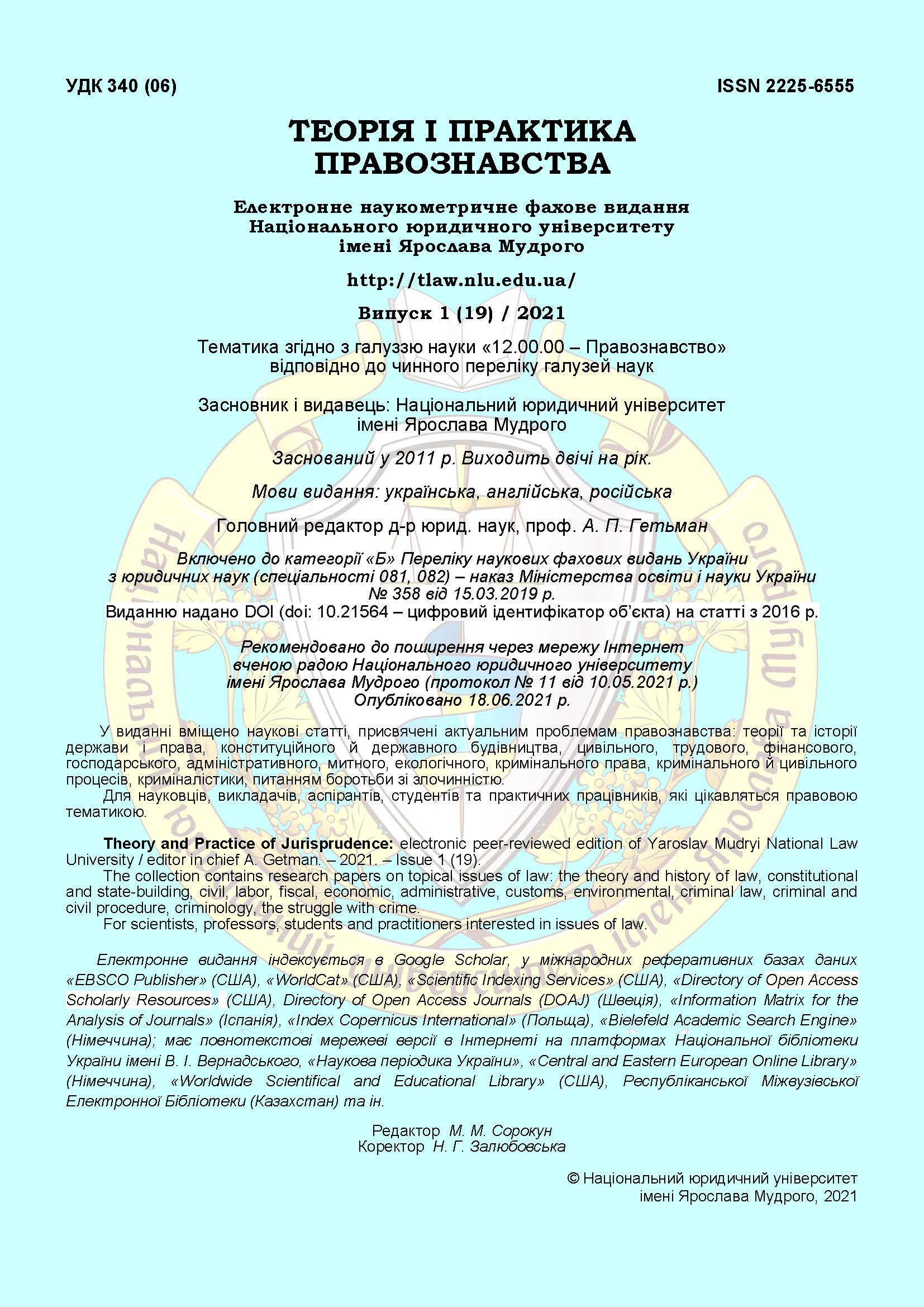Transnational organized crime as a modern phenomenon: definitions and main features
DOI:
https://doi.org/10.21564/2225-6555.2021.19.235600Keywords:
transnational organized crime , terrorist organizations , methods , IT sphere , latest technologiesAbstract
The article analyzes the current situation in the world from the standpoint of the spread of such a negative phenomenon as transnational organized crime. It has been proven that by reducing the time of entry into another country, and in EU countries also by eliminating the need for customs control, it is easier for criminals not only to quickly and unhindered to get, so to speak, to another part of the hemisphere, but also to move, hide or hide goods, weapons, etc. In addition, a powerful impetus to criminal activity was given by globalization, the development of modern technologies, in particular, methods, techniques, programs used in modern banking, facilitated the implementation of international criminal agreements, and the electronics revolution gave criminals, including criminal organizations, access to new means and methods of obtaining funds.It is substantiated that transnational organized crime is one of the highest levels of criminal evolution, a qualitatively new form of crime organization, their antisocial, illegal activities go beyond the territory and jurisdiction of one state, and the subjects are sustainable criminal organizations, whose activities and spheres of influence applies not to one but to several countries, neighboring states, regions, etc. They operate in different regions of the world, have a certain specialization, use various methods, techniques (blackmail, intimidation, corruption schemes), and are united by a common goal - to obtain a very high (maximum) profit while ensuring minimal risk.
References
Zharovska, H.P. (2013). Transnatsionalna zlochynnist: dzherela, oznaky, struktura vzaiemozviakivz. Naukovyi visnyk Chernivetskoho universytetu, issue 660. Pravoznavstvo. URL: http://lawreview.chnu.edu.ua/visnuku/st/660/19.pdf [in Ukrainian].
Ustinov, V.V. (2002). Mezhdunarodnyj opyt bor'by s terrorizmom: standarty i praktika. Moscow: Yurlitinform [in Russian].
Koloskov, V.V. (2006). Narkobiznes yak skladova transnatsionalnoi zlochynnosti ta terorystychnoi diialnosti. Naukovyi visnyk Dnipropetrovskoho derzhavnoho universytetu vnutrishnikh sprav. Spetsvyp, 2, 25–31. [in Ukrainian].
Razvitie svyazej mezhdu transnacional'noj prestupnost'yu i mezhdunarodnym terrorizmom. (2003). Bor'ba s prestupnost'yu za rubezhom, 7, 3–8. [in Russian].
Skulysh, Ye.D., Hlushkov, V.O. (2012). Poniattia transnatsionalnoi orhanizovanoi zlochynnosti ta yii spivvidnoshennia z teroryzmom. Pravo i suspilstvo, 2, 190–194. [in Ukrainian].
Rasiuk, E.V. (2005). Kryminolohichna kharakterystyka ta zapobihannia transnatsionalnomu narko-biznesu v Ukraini. Candidate’s thesis. Kyiv [in Ukrainian].
A Paper for the First International Symposium on Organized Crime, St. Cloud, France, May 1988. International Documentation on Organised and Economic Crime. USA, Lexington Books, 1988. 726 р.
Conclusions and recommendations of the international conference on preventing and controlling money-laundering and the use of the proceeds of crime: a global approach. URL: http://www.imolin.org/imolin/courmaye.html/
Downloads
Published
How to Cite
Issue
Section
License
Copyright (c) 2021 Tkachova О. V.

This work is licensed under a Creative Commons Attribution 4.0 International License.




